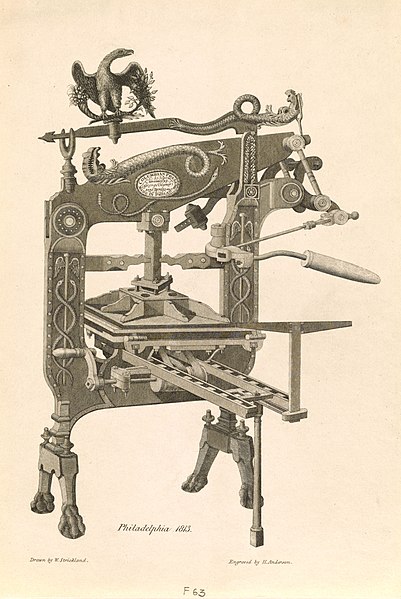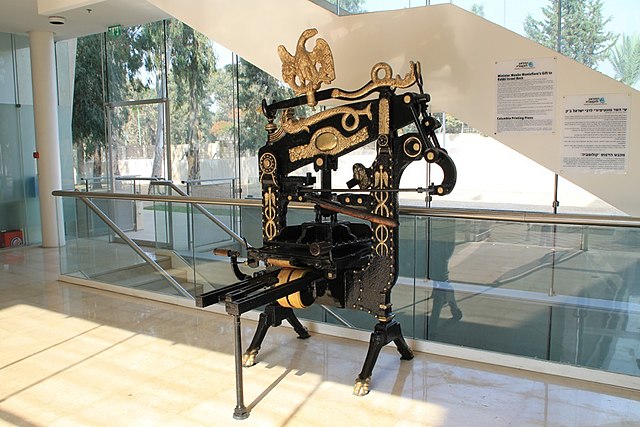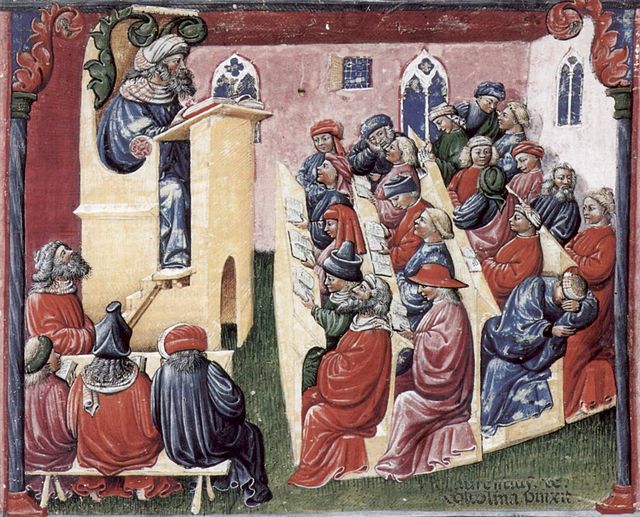The Columbian press is a type of hand-operated printing press invented in the United States by George Clymer, around 1813. Made from cast iron, it was a very successful design and many thousands were made by him and by others during the 19th century. Columbians continued to be made as late as the early-20th century, 90 years after their introduction. Despite their age, many are still used for printing, especially by artists who make prints using traditional methods.
The Columbian press at the National Museum of Scotland, 2015
An 1816 illustration of an American-made Columbian press
A Columbian press at Reichman University, Israel, 2013. The decorative elements have been highlighted in gold
The eagle on the Columbian press at the National Museum of Scotland, 2013
A printing press is a mechanical device for applying pressure to an inked surface resting upon a print medium, thereby transferring the ink. It marked a dramatic improvement on earlier printing methods in which the cloth, paper, or other medium was brushed or rubbed repeatedly to achieve the transfer of ink and accelerated the process. Typically used for texts, the invention and global spread of the printing press was one of the most influential events in the second millennium.
Recreated Gutenberg press at the International Printing Museum, Carson, California
Medieval university class (1350s)
Early modern wine press. Such screw presses, used in Europe for a wide range of uses, provided Gutenberg with the model for his printing press.
Movable type sorted in a letter case and loaded in a composing stick on top








